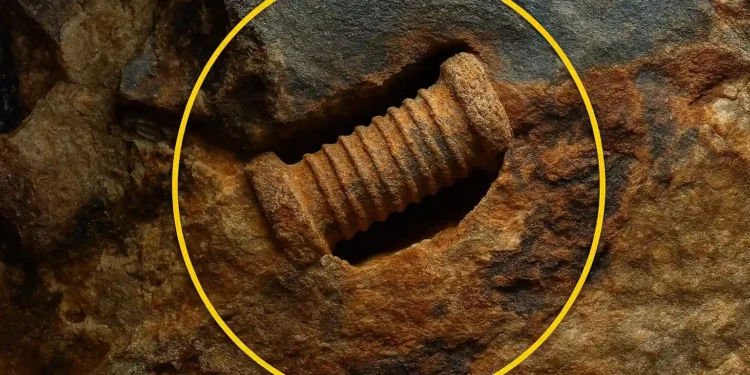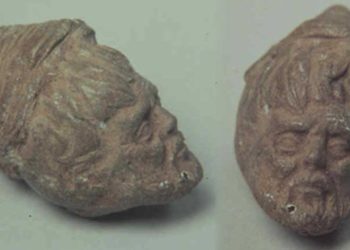There are certain ancient artifacts that defy explanation and continue to puzzle experts who examine them.
Human history might be far older than we think. Beneath the layers of earth and ice, scattered across forgotten landscapes, a small number of objects have been discovered that seem to challenge everything we know about time, technology, and civilization. These are not simple curiosities — they’re anomalies. And despite scientific scrutiny, they remain unsolved. I mean, look at Göbekli Tepe, for example. It is an ancient site that breaks history as we know it, yet even though it was found several decades ago, we are not being taught about it in school. Isn’t that odd? But back to ancient artifacts that defy explanation, we discuss Göbekli Tepe in numerous other articles.
Ancient artifacts that defy explanation
From strange mechanical devices to human-like footprints in rocks dated hundreds of millions of years old, these discoveries raise the same quiet question: what if the timeline we’ve built is missing pieces? Now these are not claims in any way, this is an article that asks the uncomfortable question, what if…?
Here are seven ancient artifacts that defy explanation — and continue to trouble the experts who study them.
1. The Antikythera Mechanism
Recovered from a Roman-era shipwreck off the coast of Greece in 1901, the Antikythera Mechanism is widely considered the world’s first analog computer. Dating back over 2,000 years, this intricate device used a system of bronze gears to predict solar and lunar eclipses, planetary movements, and even the timing of the Olympic Games. Nothing like it appeared again until the 14th century. Despite X-rays and reconstructions, experts still don’t fully understand how the ancient Greeks developed such advanced mechanical knowledge — or why this technology disappeared for over a thousand years.
2. The Nampa Figurine
In 1889, a tiny clay figure was pulled up during a well-drilling operation in Nampa, Idaho. At just 1.5 inches tall, the figurine resembles a human female and was found 300 feet below the surface — embedded in sediment that some researchers say could be over a million years old. The discovery sparked immediate controversy. Mainstream archaeology dates anatomically modern humans to around 200,000 years ago. If the strata are accurately dated, it would mean the figurine existed hundreds of thousands of years before modern humans were thought to exist. One of the best ancient artifacts that defies explanation, or just another hoax? You decide.
3. A 200-Million-Year-Old Footprint
Near the South African border with Eswatini, a large granite boulder bears a single, human-like footprint — measuring over four feet in length. According to local stories, a hunter discovered it in 1912, but geologists believe the rock itself is roughly 200 million years old. While many consider the imprint a geological coincidence, others point to its depth, symmetry, and placement as reasons to look deeper. There’s no consensus, only questions.
4. The Permian Footprint
In New Mexico, researchers found a human-like footprint embedded in strata dating back to the Permian period — approximately 290 million years ago. Alongside it, they discovered fossilized tracks of extinct animals and birds. If authentic, this find would not just rewrite human history — it would upend it. Skeptics argue it’s a misidentified geological feature, but the possibility remains open, if unresolved. Talk about it has been mixed but not many bneleive this is a genuine ancient artifact that defies explanation. Most experts incline to believe it to be just another hoax.
5. The alleged 300-Million-Year-Old Screw
This one is perhaps the weirdest of them all. The king of alleged ancient artifacts that defy explanation. Or is it?
In 2002, a strange object is said to have surfaced in Lanzhou, China: a metallic fragment embedded in stone, bearing what looked like the thread of a screw. Early testing failed to determine the stone’s exact composition, and a group of geologists and physicists supposedly examined the object in detail — but couldn’t agree on its origin. Some believed it to be a rare natural formation, while others saw it as a potential artifact from a lost civilization. Its age? Estimated at 300 to 400 million years. Fact or fiction? You decide.
6. The London Hammer
In the 1930s, hikers near London, Texas, found a hammerhead embedded in ancient rock. The formation surrounding the object was dated to around 400 million years ago. The hammer’s wooden handle appeared to be turning to coal, and the head — made of iron — showed minimal corrosion. While some believe it’s a modern tool somehow encased in prehistoric rock through unknown geological processes, others see it as evidence that someone — or something — had advanced metallurgy hundreds of millions of years ago. Smells fishy.
7. The Klerksdorp Spheres
Speaking about ancient artifacts that defy explanation, I cannot leave out these bad boys. Discovered in South African mines, the Klerksdorp Spheres are small, round objects with curious grooves running around their circumference. They’re found in Precambrian layers of rock, dating back roughly 570 million years. Some researchers argue they’re naturally formed by volcanic processes. Others, pointing to their symmetry and hard metallic shells, suggest they may have been crafted. The spheres remain stored in museums and research collections, with no clear consensus on their origin.
While mainstream science offers natural explanations for some of these artifacts, and I may be inclined to agree, others remain unresolved or poorly understood. Whether they’re misidentified, misdated, or genuine outliers, these discoveries continue to raise questions about the completeness of our current historical timeline. As new technologies allow us to look deeper into the Earth — and the past — it’s worth keeping an open mind about what we might still uncover.











